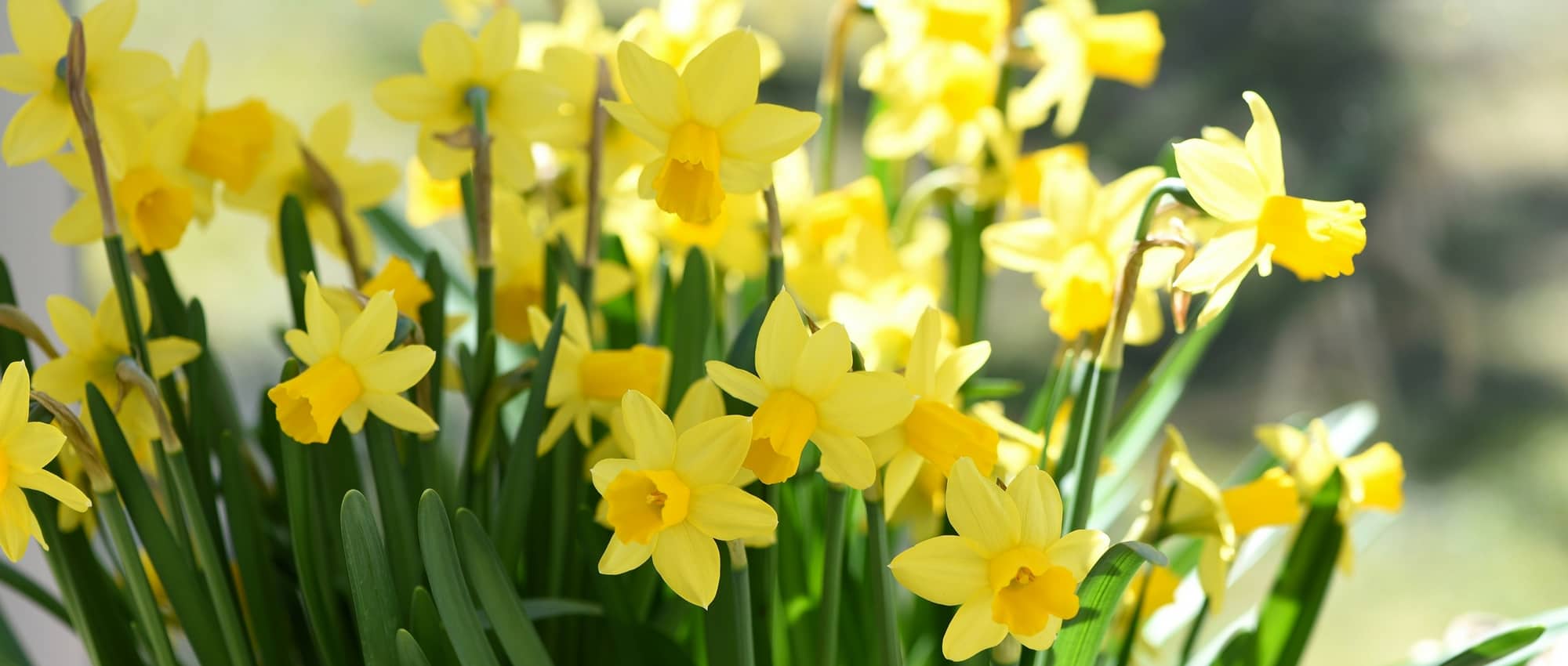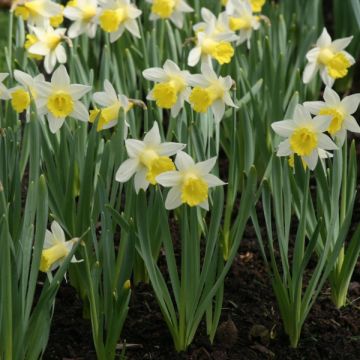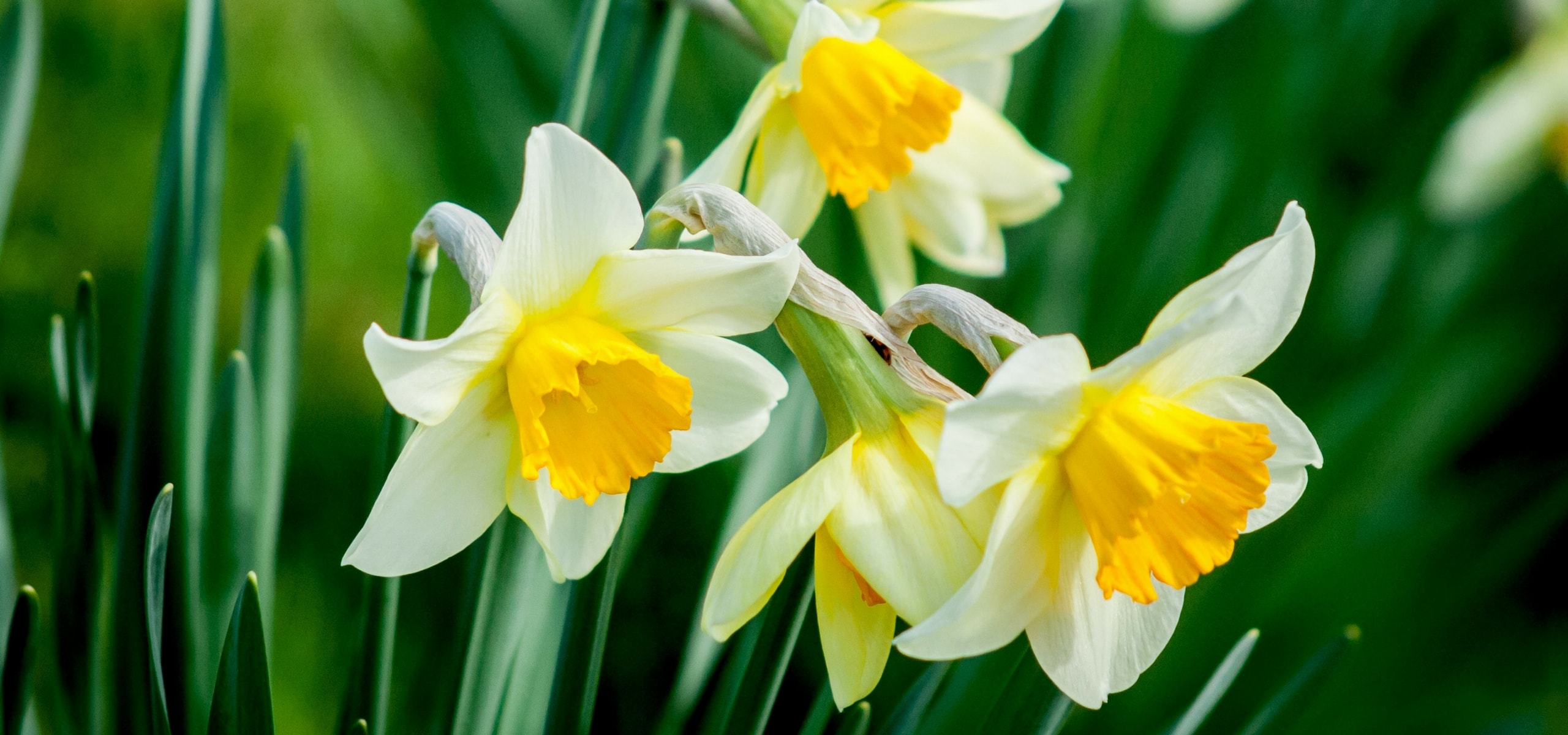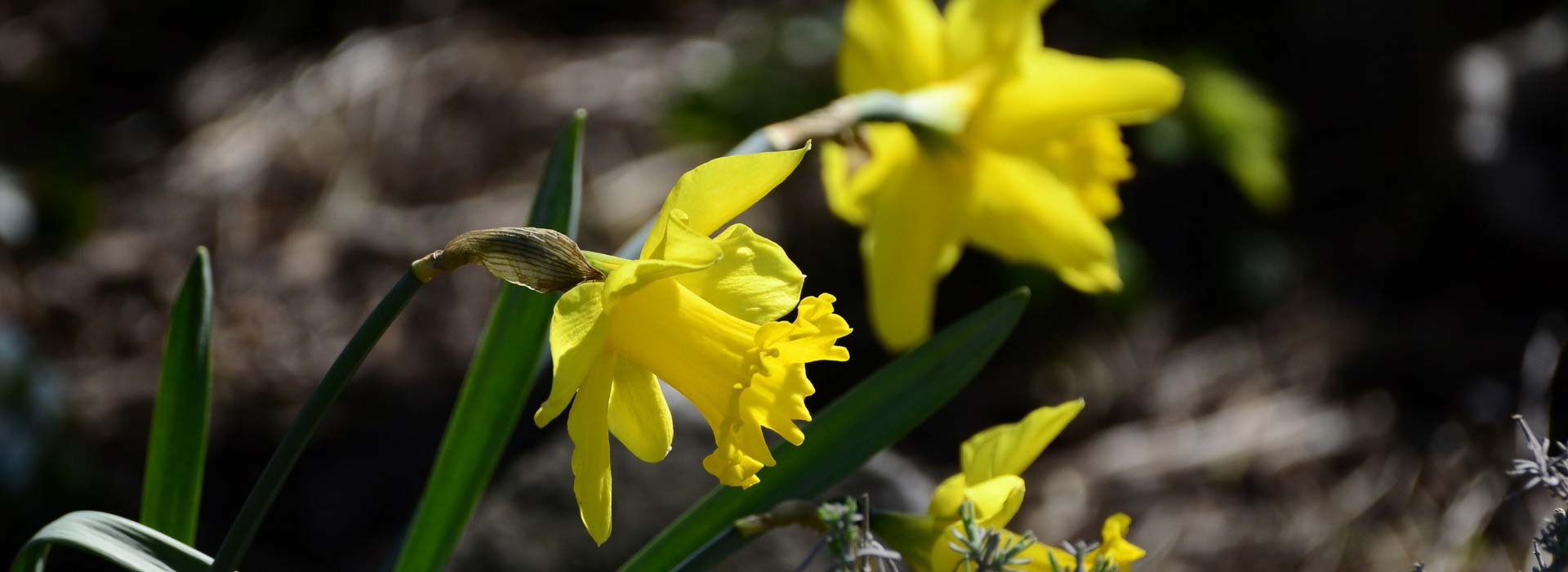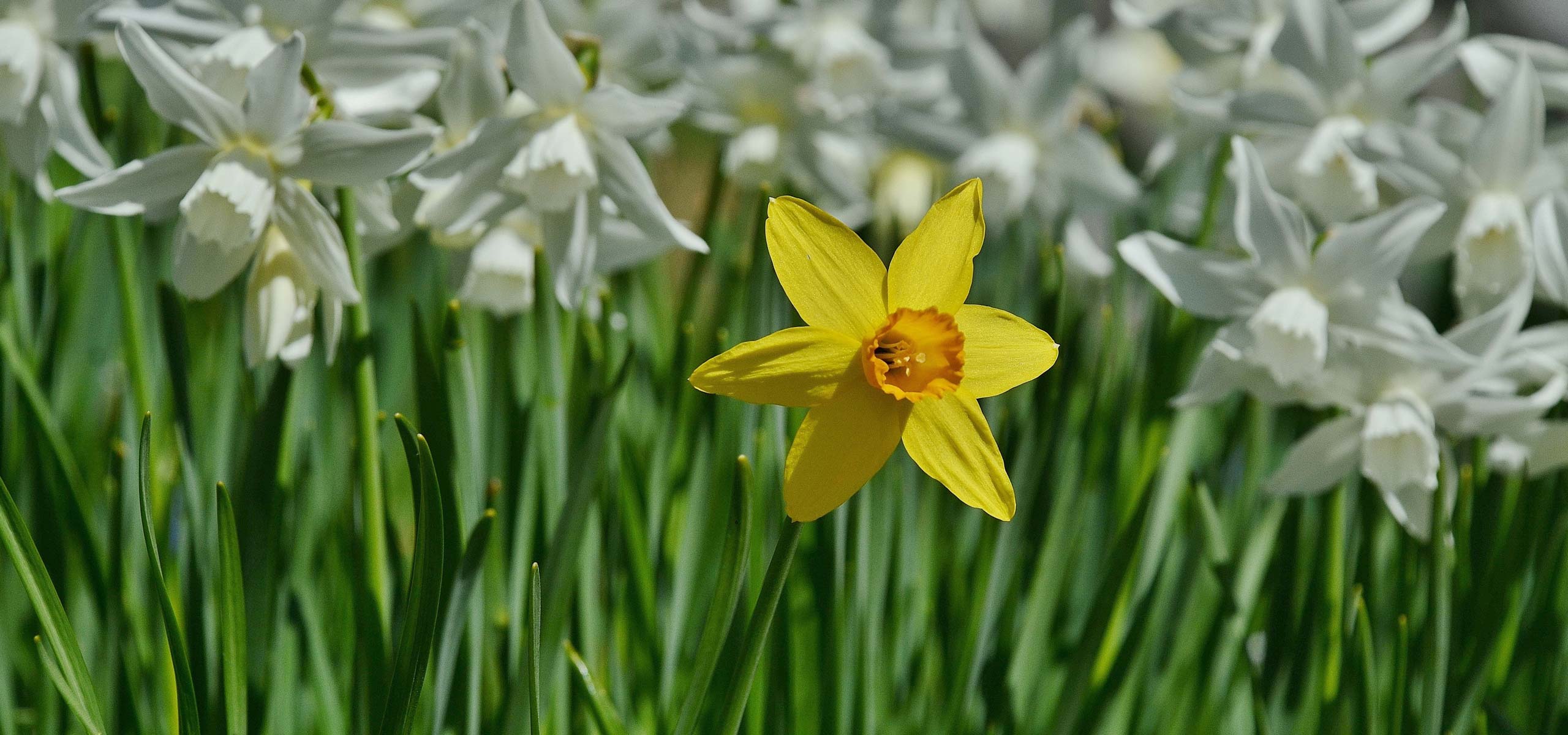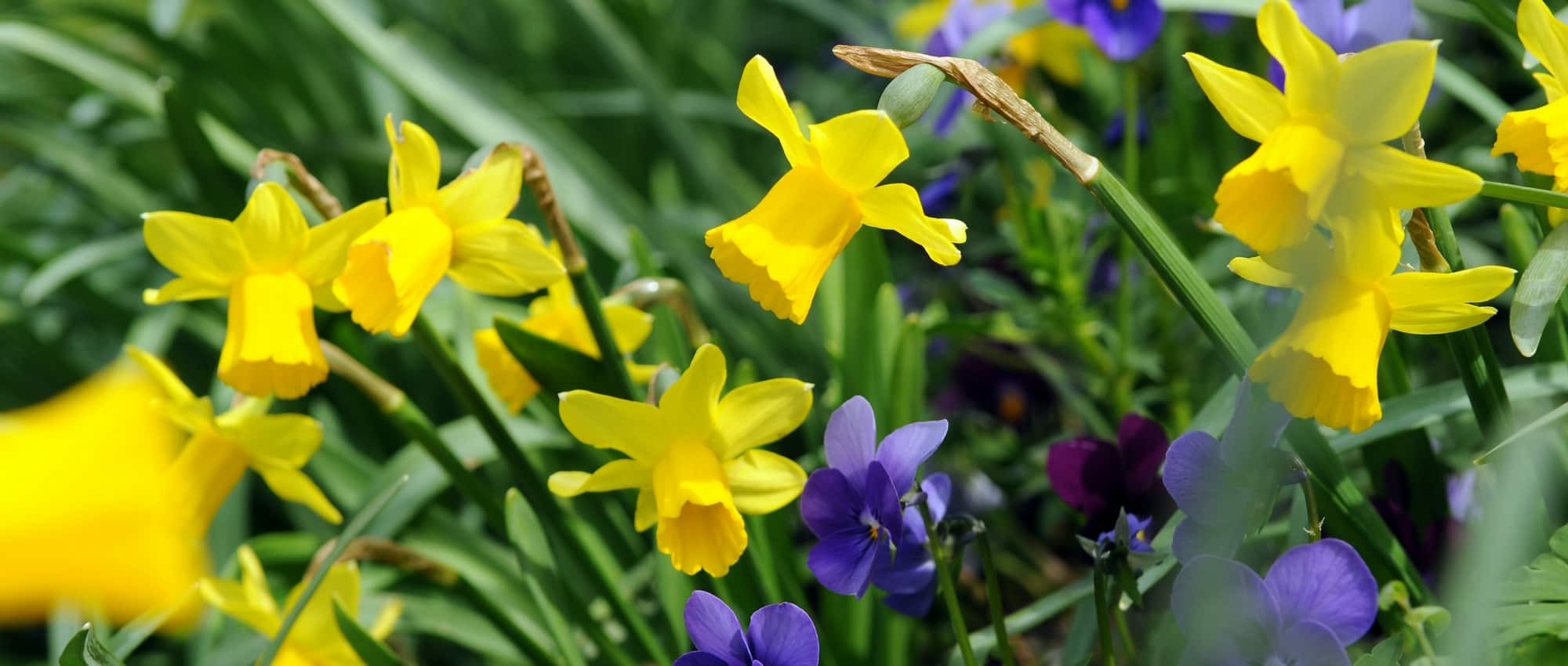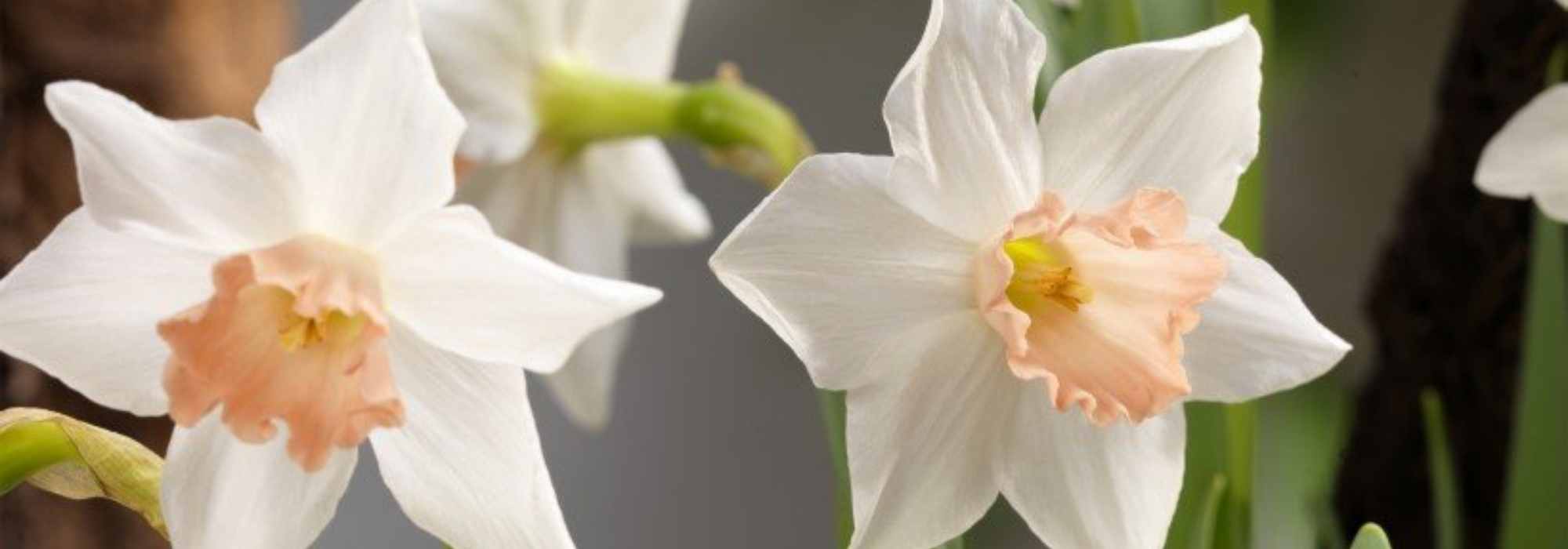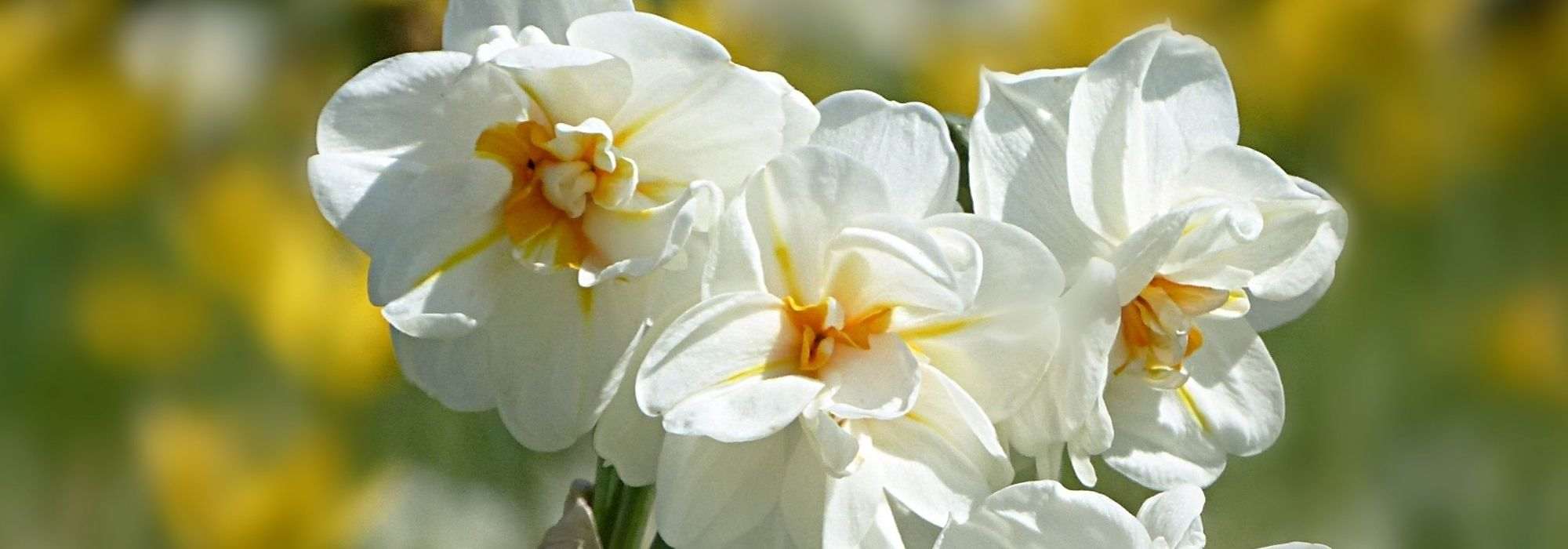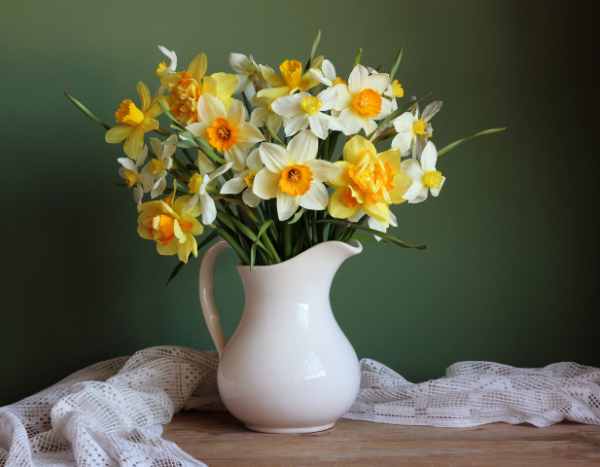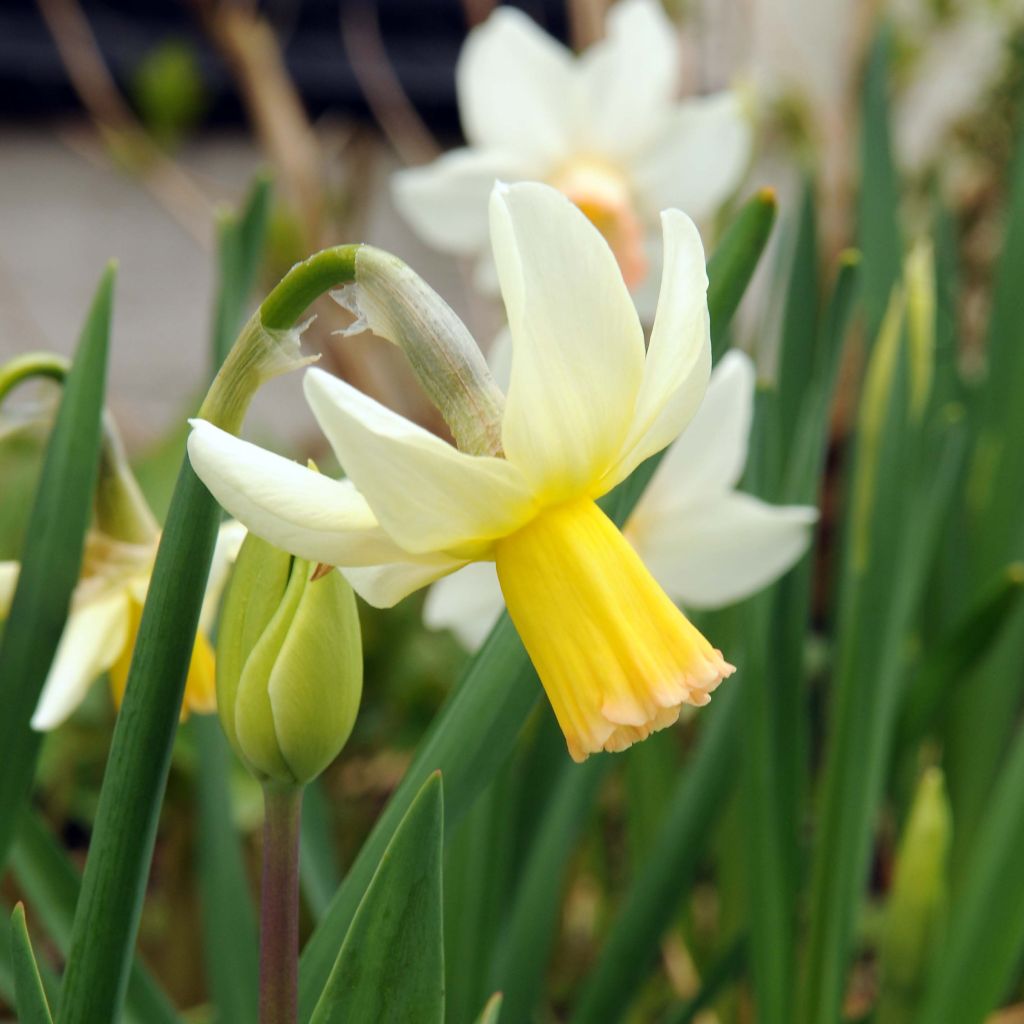

Narcissus Cotinga
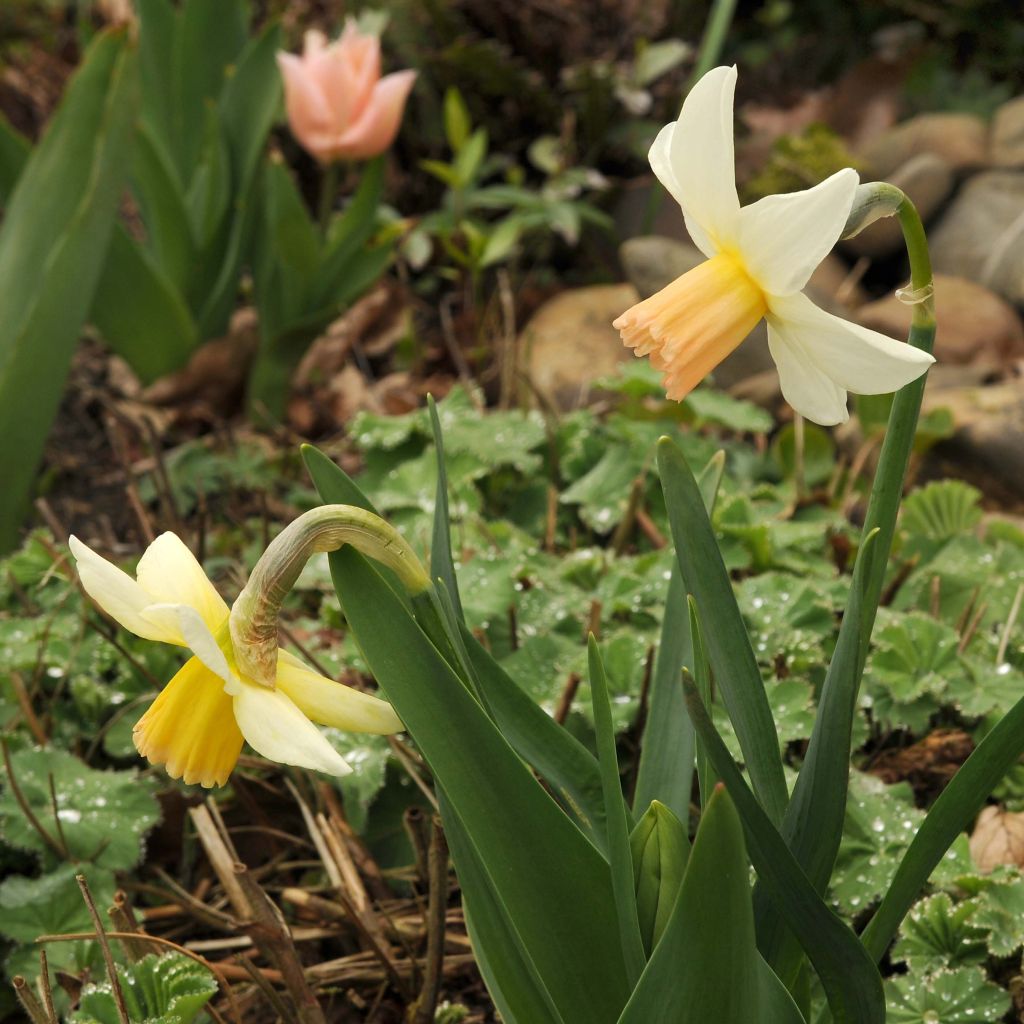

Narcissus Cotinga
Narcissus Cotinga
Narcissus Cotinga
Narcisse à fleurs de cyclamen
In general, your bulbs are always of very high quality.
Nathalie E., 11/11/2018
Special offer!
Receive a €20 voucher for any order over €90 (excluding delivery costs, credit notes, and plastic-free options)!
1- Add your favorite plants to your cart.
2- Once you have reached €90, confirm your order (you can even choose the delivery date!).
3- As soon as your order is shipped, you will receive an email containing your voucher code, valid for 3 months (90 days).
Your voucher is unique and can only be used once, for any order with a minimum value of €20, excluding delivery costs.
Can be combined with other current offers, non-divisible and non-refundable.
This plant carries a 6 months recovery warranty
More information
We guarantee the quality of our plants for a full growing cycle, and will replace at our expense any plant that fails to recover under normal climatic and planting conditions.

Does this plant fit my garden?
Set up your Plantfit profile →
Description
The Narcissus 'Cotinga' is an astonishing variety of small size, carrying on top of a short stem large flowers that seem to be turned up by a spring breeze, with a white corolla and a pink trumpet. It also has the advantage of flowering from the end of winter in flower beds and rockeries, at the same time as early flowering botanic tulips and the last crocuses. It is a vigorous plant that is easy to grow in well-drained, hardy soil and settles quietly in the garden. The dwarf varieties are ideal for ornamenting rockeries and flower pots.
The Narcissus 'Cotinga', a horticultural hybrid born in the USA in 1976 from the cross-breeding of the variety 'Mitylene' and the Narcissus cyclamineus, belongs to the Amaryllidaceae family. The Narcissus genus includes about 50 species found mainly in Western Mediterranean, but also in Africa and Asia. The cyclamineus botanical species, its parent, is native to the northwest of Portugal and the northwest of Spain, and gets its name from its outer petals which form a completely reflexed corolla, like cyclamens. This characteristic is often greatly attenuated in its hybrid descendants.
This small, vigorous plant reaches about 15-20 cm (6-8in) in height for the foliage, 25-30 cm (10-12in) in bloom. Its bi-coloured flowers, of a good size, are composed of a corolla of ivory white and upturned petals, on which a rather long, undulate, flared corona is inserted, with a tender salmon pink colour that is slightly darker at the edges. It is a robust plant despite its small size, with early flowering, which naturalises itself in the garden within 3 or 4 years through the production of bulblets. Its foliage, very fine, is a slightly glaucous green.
The Narcissus 'Cotinga' grows well in any well-drained and loosened soil, but the results are less good in soils that are too humid, especially in summer, or excessively acidic. There is such a choice of varieties among narcissus that you can enjoy them for three months in spring without getting tired for a single moment. They naturalise themselves easily and all share a love of yellow and white, and often sweet-scented perfumes. So many reasons to grow them in large clumps (at least 20 bulbs) for an enhanced effect. Associate the narcissus 'Cotinga', in natural-looking flower beds and rockeries, with muscari, squills, crocuses, and hyacinths, accompany them with early flowering botanic tulips but also with forget-me-nots, pansies or liverworts. In pots, this narcissus is also perfect.
Daffodil or Narcissus? Botanically speaking, daffodils are part of the narcissus family. They have flowers grouped in twos or more and their corolla forms a campanulate trumpet that is longer than it is wide. The botanical species have the charm of wild plants and thrive in rockeries: N. bulbocodium, N. canaliculatus, N. juncifolius, N. pseudonarcissus, the simple daffodil of the woods, are among the prettiest. For bouquets, we advise you not to mix narcissus with other flowers such as tulips, as the stems of narcissus contain a substance that quickly withers other flowers. This detrimental effect on other types of flowers can be reduced by dipping the ends of narcissus stems in hot water for 1 to 2 minutes.
Narcissus Cotinga in pictures
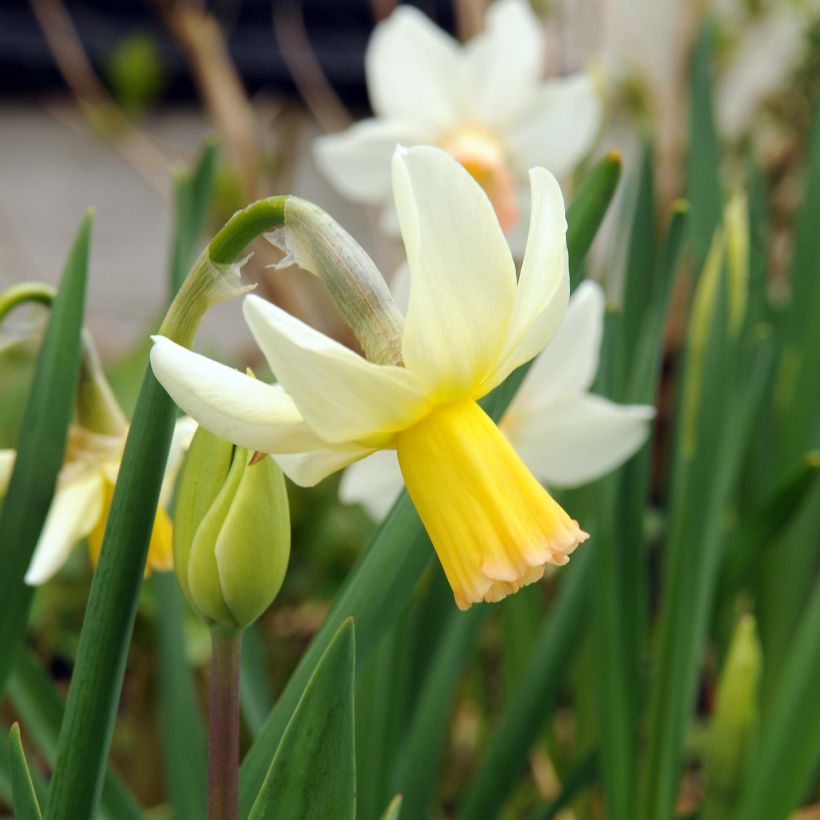

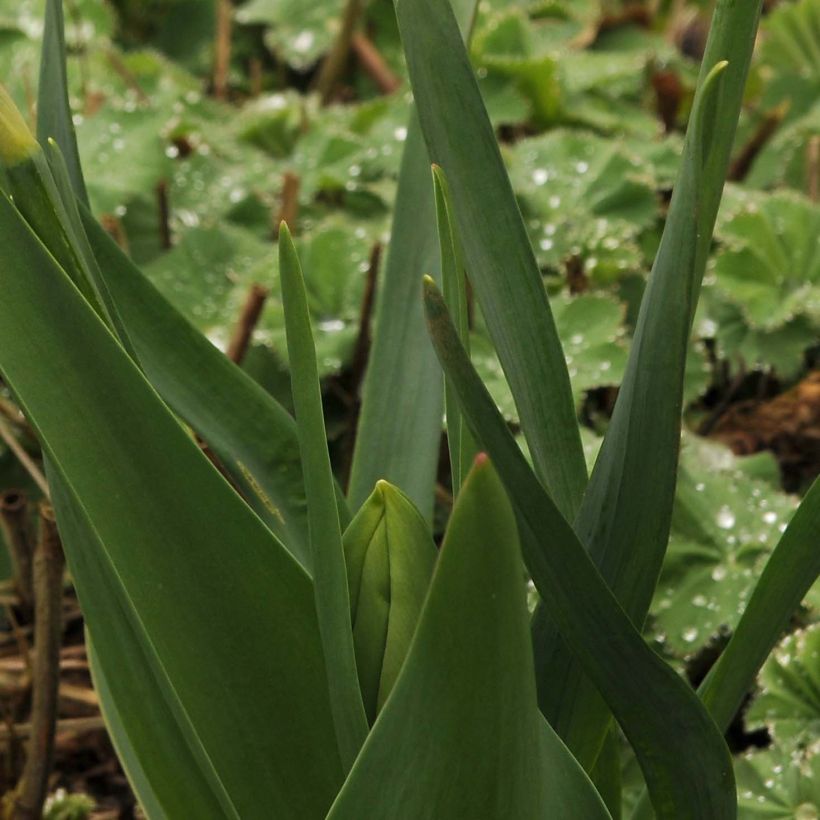

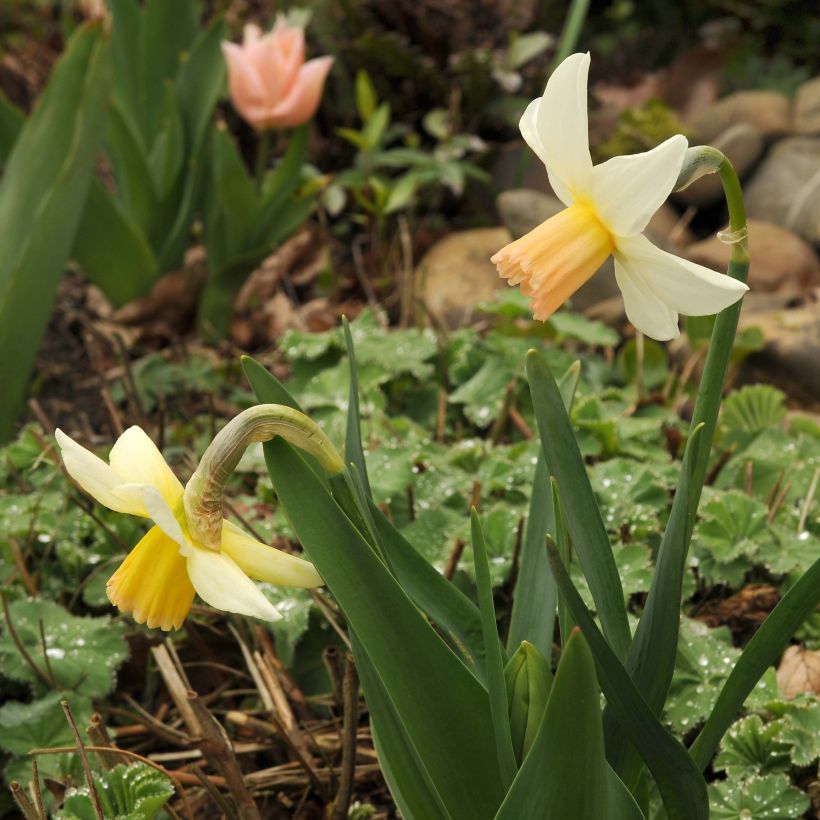

Plant habit
Flowering
Foliage
Botanical data
Narcissus
Cotinga
Amaryllidaceae
Narcisse à fleurs de cyclamen
Cultivar or hybrid
Other Botanical Daffodils
View all →Planting and care
Narcissi bloom from March to May and come back every year. Very easy to grow, they thrive in both the shade of a woodland and a sunny flower bed. Plant them 10 cm (4in) deep and spaced 10 cm (4in) apart. Group them in sets of at least 5 bulbs, in patches of uniform colours or mixed. You can plant them in the short grass meadow. In this case, lift the grass turf, dig and loosen the soil to a depth of at least 20 cm (8in) (the height of a spade). Plant your bulbs, cover with soil and replace the turf. Choose a spot where you won't mow, as it is necessary to let the narcissus leaves wither before cutting them. It is at this moment that the bulb regenerates and prepares the flowers for the following year. However, remember to remove the flowers as soon as they fade to prevent seed formation. This would unnecessarily deplete the bulb.
Planting period
Intended location
Care
Planting & care advice
-
, onOrder confirmed
Reply from on Promesse de fleurs
Haven't found what you were looking for?
Hardiness is the lowest winter temperature a plant can endure without suffering serious damage or even dying. However, hardiness is affected by location (a sheltered area, such as a patio), protection (winter cover) and soil type (hardiness is improved by well-drained soil).

Photo Sharing Terms & Conditions
In order to encourage gardeners to interact and share their experiences, Promesse de fleurs offers various media enabling content to be uploaded onto its Site - in particular via the ‘Photo sharing’ module.
The User agrees to refrain from:
- Posting any content that is illegal, prejudicial, insulting, racist, inciteful to hatred, revisionist, contrary to public decency, that infringes on privacy or on the privacy rights of third parties, in particular the publicity rights of persons and goods, intellectual property rights, or the right to privacy.
- Submitting content on behalf of a third party;
- Impersonate the identity of a third party and/or publish any personal information about a third party;
In general, the User undertakes to refrain from any unethical behaviour.
All Content (in particular text, comments, files, images, photos, videos, creative works, etc.), which may be subject to property or intellectual property rights, image or other private rights, shall remain the property of the User, subject to the limited rights granted by the terms of the licence granted by Promesse de fleurs as stated below. Users are at liberty to publish or not to publish such Content on the Site, notably via the ‘Photo Sharing’ facility, and accept that this Content shall be made public and freely accessible, notably on the Internet.
Users further acknowledge, undertake to have ,and guarantee that they hold all necessary rights and permissions to publish such material on the Site, in particular with regard to the legislation in force pertaining to any privacy, property, intellectual property, image, or contractual rights, or rights of any other nature. By publishing such Content on the Site, Users acknowledge accepting full liability as publishers of the Content within the meaning of the law, and grant Promesse de fleurs, free of charge, an inclusive, worldwide licence for the said Content for the entire duration of its publication, including all reproduction, representation, up/downloading, displaying, performing, transmission, and storage rights.
Users also grant permission for their name to be linked to the Content and accept that this link may not always be made available.
By engaging in posting material, Users consent to their Content becoming automatically accessible on the Internet, in particular on other sites and/or blogs and/or web pages of the Promesse de fleurs site, including in particular social pages and the Promesse de fleurs catalogue.
Users may secure the removal of entrusted content free of charge by issuing a simple request via our contact form.
The flowering period indicated on our website applies to countries and regions located in USDA zone 8 (France, the United Kingdom, Ireland, the Netherlands, etc.)
It will vary according to where you live:
- In zones 9 to 10 (Italy, Spain, Greece, etc.), flowering will occur about 2 to 4 weeks earlier.
- In zones 6 to 7 (Germany, Poland, Slovenia, and lower mountainous regions), flowering will be delayed by 2 to 3 weeks.
- In zone 5 (Central Europe, Scandinavia), blooming will be delayed by 3 to 5 weeks.
In temperate climates, pruning of spring-flowering shrubs (forsythia, spireas, etc.) should be done just after flowering.
Pruning of summer-flowering shrubs (Indian Lilac, Perovskia, etc.) can be done in winter or spring.
In cold regions as well as with frost-sensitive plants, avoid pruning too early when severe frosts may still occur.
The planting period indicated on our website applies to countries and regions located in USDA zone 8 (France, United Kingdom, Ireland, Netherlands).
It will vary according to where you live:
- In Mediterranean zones (Marseille, Madrid, Milan, etc.), autumn and winter are the best planting periods.
- In continental zones (Strasbourg, Munich, Vienna, etc.), delay planting by 2 to 3 weeks in spring and bring it forward by 2 to 4 weeks in autumn.
- In mountainous regions (the Alps, Pyrenees, Carpathians, etc.), it is best to plant in late spring (May-June) or late summer (August-September).
The harvesting period indicated on our website applies to countries and regions in USDA zone 8 (France, England, Ireland, the Netherlands).
In colder areas (Scandinavia, Poland, Austria...) fruit and vegetable harvests are likely to be delayed by 3-4 weeks.
In warmer areas (Italy, Spain, Greece, etc.), harvesting will probably take place earlier, depending on weather conditions.
The sowing periods indicated on our website apply to countries and regions within USDA Zone 8 (France, UK, Ireland, Netherlands).
In colder areas (Scandinavia, Poland, Austria...), delay any outdoor sowing by 3-4 weeks, or sow under glass.
In warmer climes (Italy, Spain, Greece, etc.), bring outdoor sowing forward by a few weeks.






























